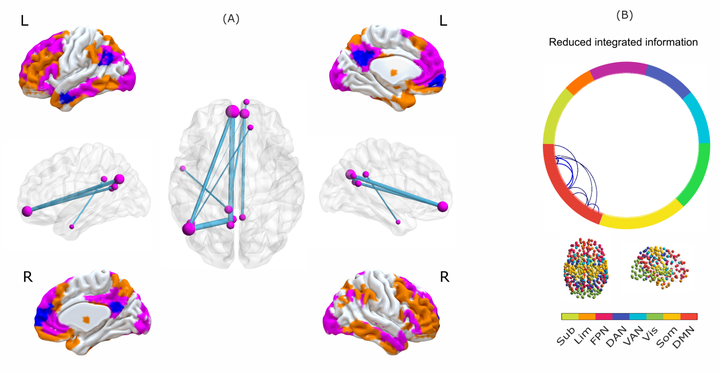A synergistic workspace for human consciousness revealed by Integrated Information Decomposition

Abstract
A central goal of neuroscience is to understand how the brain synthesises information from multiple inputs to give rise to a unified conscious experience. This process is widely believed to require integration of information. Here, we combine information theory and network science to address two fundamental questions: how is the human information-processing architecture functionally organised? And how does this organisation support human consciousness? To address these questions, we leverage the mathematical framework of Integrated Information Decomposition to delineate a cognitive architecture wherein specialised modules interact with a “synergistic global workspace,” comprising functionally distinct gateways and broadcasters. Gateway regions gather information from the specialised modules for processing in the synergistic workspace, whose contents are then further integrated to later be made widely available by broadcasters. Through data-driven analysis of resting-state functional MRI, we reveal that gateway regions correspond to the brain’s well-known default mode network, whereas broadcasters of information coincide with the executive control network. Demonstrating that this synergistic workspace supports human consciousness, we further apply Integrated Information Decomposition to BOLD signals to compute integrated information across the brain. By comparing changes due to propofol anaesthesia and severe brain injury, we demonstrate that most changes in integrated information happen within the synergistic workspace. Furthermore, it was found that loss of consciousness corresponds to reduced integrated information between gateway, but not broadcaster, regions of the synergistic workspace. Thus, loss of consciousness may coincide with breakdown of information integration by this synergistic workspace of the human brain. Together, these findings demonstrate that refining our understanding of information-processing in the human brain through Integrated Information Decomposition can provide powerful insights into the human neurocognitive architecture, and its role in supporting consciousness.